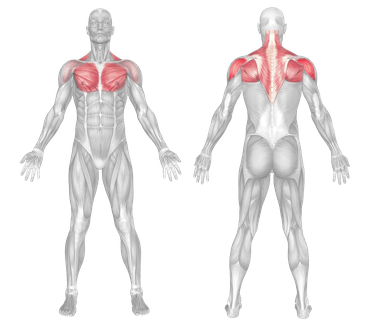How to: Standing Side Toe Touching
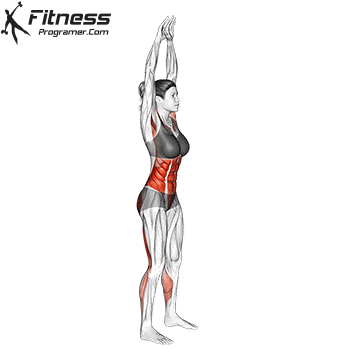
How to: All Fours Squad Stretch
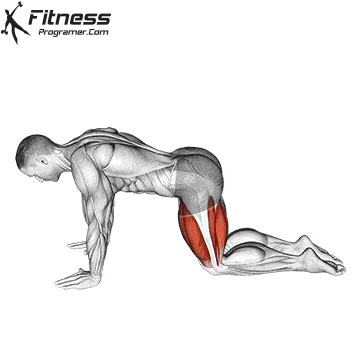
Wrist Ulnar Deviator And Extensor Stretch
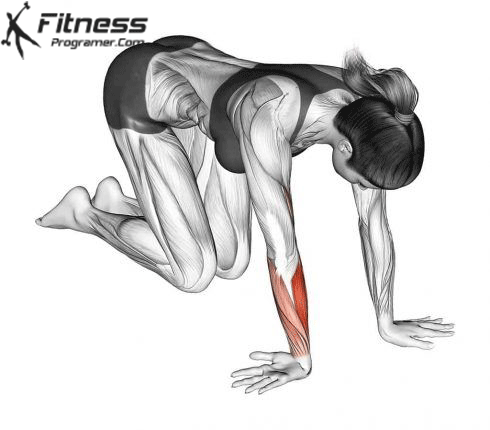
Reverse Wrist Stretch
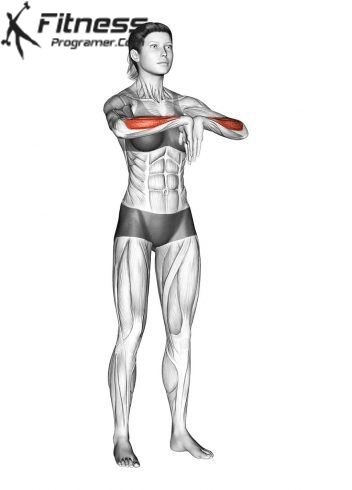
How to do Wrist Stretch
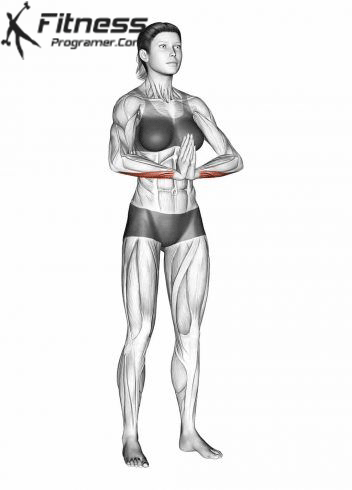
How to Seated Toe Touches
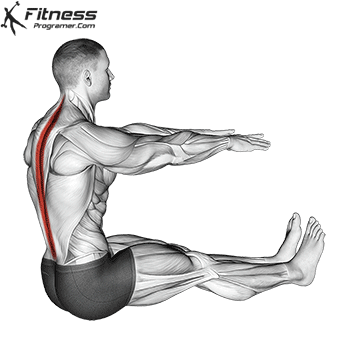
Dynamic stretching consists of active movements. It is usually done before a workout to help warm up your muscles and increase your heart rate. Move slowly, stop and repeat, dig a little deeper each time and improve your range of motion. Pre-workout dynamic stretching improves circulation, prepares your muscles for movement, and temporarily increases your range of motion.
Static stretching, more commonly done at the end of a workout when your muscles are warm, is when stretches are held in place for a certain period of time, not moving. Static stretching is the most effective form of stretching for loosening up your muscles, joints, ligaments, and tendons, while also improving flexibility and range of motion. Static stretching requires you to move a muscle to the end of its range of motion and maintain this position for 20 to 45 seconds. Repeat this 2 to 3 times each.
Muscles Worked in the Upper Back Stretch
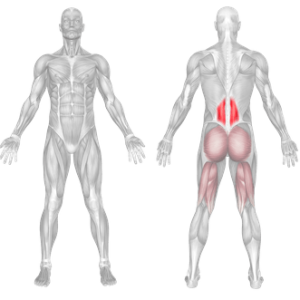
Overview
The towel shoulder stretch is a simple yet effective mobility exercise designed to improve flexibility, enhance range of motion, and prevent shoulder injuries. It targets the muscles and soft tissues around the shoulders, including the rotator cuff muscles and the muscles of the upper back. It is especially beneficial for individuals with tight shoulders, athletes, and those recovering from shoulder strain.
By using a towel as an extension of your grip, this stretch allows you to gradually improve flexibility without putting excessive strain on the shoulder joint. This stretch is commonly used in rehabilitation, warm-up, cooldown routines, and mobility drills to:
Increase shoulder flexibility
Correct postural imbalances
Relieve tension in the upper body
Reduce the risk of shoulder injuries
How to Perform the Towel Shoulder Stretch
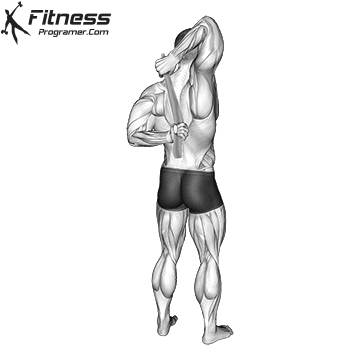
Step 1: Get Into Position
Stand with your feet shoulder-width apart for stability.
Hold a towel behind your back with one hand gripping the top end and the other hand holding the bottom end.
Step 2: Perform the Stretch
Gently pull the towel upward with your top hand, bringing your lower hand up along your back.
Hold the stretch for 15 to 30 seconds, feeling a stretch in your shoulders and triceps.
Slowly release the tension, lowering your arms back to the starting position.
Switch sides and repeat, ensuring even flexibility in both shoulders.
Step 3: Breathing and Control
Breathe deeply while holding the stretch to enhance relaxation.
Do not force the movement; work within your comfortable range of motion.
Tips for Proper Form
Keep your spine neutral and avoid rounding your back.
Move slowly and with control to prevent sudden strain.
Do not force the stretch beyond your natural flexibility.
Engage your shoulder blades to maximize the effectiveness of the stretch.
Maintain a firm grip on the towel, adjusting hand placement as needed.
Common Mistakes to Avoid
Using excessive force, which can cause shoulder strain or discomfort.
Holding your breath, limiting muscle relaxation and stretch effectiveness.
Shrugging the shoulders, reducing the effectiveness of the stretch.
Arching the lower back, which can shift focus away from the shoulders.
Not keeping a consistent grip, leading to imbalanced stretching.
Benefits of the Towel Shoulder Stretch
1. Improves Shoulder Mobility
This stretch enhances the range of motion in the shoulders, helping to reduce stiffness and improve movement quality.
2. Reduces Risk of Shoulder Injuries
By increasing flexibility, the towel shoulder stretch helps prevent rotator cuff injuries, impingements, and strains.
3. Relieves Tension and Tightness
Ideal for individuals who experience shoulder stiffness from prolonged sitting, poor posture, or repetitive movements.
4. Enhances Posture and Alignment
Regular stretching promotes better shoulder positioning, reducing the risk of slouching and muscle imbalances.
5. Beneficial for Athletes and Weightlifters
This stretch improves shoulder flexibility, allowing for better overhead movements and reducing injury risk in strength training and sports.
How to Incorporate Into Your Routine
As a Warm-Up: Perform 2 to 3 rounds of 10-15-second holds per side before upper body workouts.
As a Cooldown Stretch: Hold the stretch for 15-30 seconds per side after a workout to relieve tension.
For Daily Mobility Work: Include it in your morning or evening routine to maintain shoulder health and flexibility.
Muscles Worked
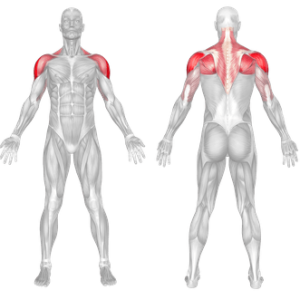
Pendulum Stretch / Codman’s pendulum
The pendulum exercise is a specific type of exercise commonly used in physical therapy and rehabilitation for shoulder injuries. It is designed to strengthen the muscles around the shoulder joint and improve stability. It is often used during the early stages of rehabilitation when range of motion may be limited or painful.
How to do:
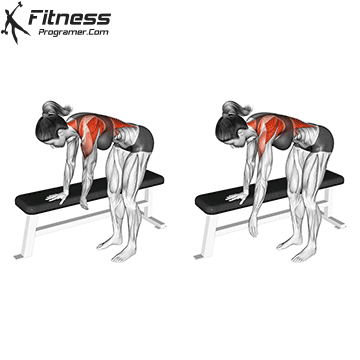
- Stand next to a stable surface, such as a table or chair, and place your hand on it for support.
- Bend your knees slightly and lean forward, keeping your back straight.
- Allow your arm on the side you want to stretch to hang down freely.
- Gently swing your arm back and forth like a pendulum, allowing it to move in a natural and relaxed manner.
- Start with small swings and gradually increase the range of motion as you feel more comfortable.
- Perform the swinging motion for about 10-15 seconds.
- Switch sides and repeat the exercise with the other arm.
It’s important to note that the pendulum stretch should be done in a controlled and pain-free manner. If you experience any discomfort or pain, you should stop the exercise and consult with a healthcare professional.
Pendulum Exercise – Benefits
The pendulum exercise offers several benefits, particularly for individuals recovering from shoulder injuries or seeking to improve shoulder stability and range of motion. Here are some of the key benefits:
Shoulder Rehabilitation: The pendulum exercise is commonly used in shoulder rehabilitation programs. It helps improve joint mobility, strengthen the muscles around the shoulder joint, and promote healing after an injury or surgery. (Rotator cuff exercises for stronger shoulder)
Range of Motion: Performing pendulum exercises can gradually increase the range of motion in the shoulder joint. The controlled swinging motion helps to stretch the muscles, tendons, and ligaments, allowing for improved flexibility and mobility.
Pain Relief: Pendulum exercises can provide pain relief for individuals experiencing shoulder discomfort or stiffness. The gentle movement stimulates blood flow to the area, which can help reduce inflammation and alleviate pain symptoms.
Improved Circulation: The swinging motion of the pendulum exercise helps to increase blood circulation around the shoulder joint. Improved circulation can aid in the delivery of nutrients and oxygen to the tissues, promoting healing and recovery.
Shoulder Pendulum – Muscles Worked
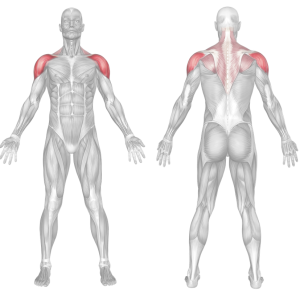
Seated Chest Stretch Overview
The Seated Chest Stretch is a static stretching exercise that focuses on lengthening the pectoralis major and minor muscles, as well as the anterior deltoids. It is particularly beneficial for those who spend long hours sitting, as it helps counteract poor posture and tightness in the chest muscles.
This stretch is commonly used in warm-ups, cool-downs, rehabilitation programs, and posture correction routines.
It is an effective stretch for:
- Improving posture by reducing forward shoulder rounding
- Enhancing flexibility for strength training and athletic performance
- Relieving muscle tightness caused by prolonged sitting or poor posture
How to Perform the Seated Chest Stretch
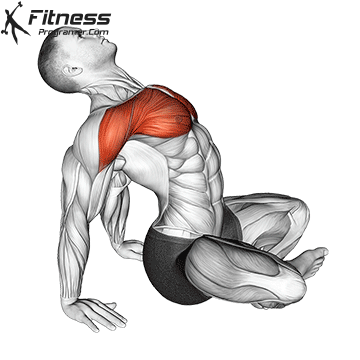
Step-by-Step Guide
Start in a Seated Position:
- Sit on the floor with your legs bent and feet flat on the ground.
- Put your hands behind your back, fingers facing your body.
Engage the Stretch:
- Push your chest upward and forward, opening your shoulders and chest.
- Keep your arms slightly bent but stable to avoid excessive pressure on the wrists.
Hold the Position:
- Maintain the stretch for 10 to 20 seconds while breathing deeply.
- Feel the gentle stretch across your chest and shoulders without straining.
Release Slowly:
- Relax and return to the starting position.
- Repeat for 2 to 3 sets, adjusting intensity as needed.
Tips for Proper Form
- Keep your shoulders relaxed and avoid shrugging.
- Maintain a slight bend in the elbows to reduce joint strain.
- Breathe deeply to enhance relaxation and stretch effectiveness.
- Adjust hand placement to find the most comfortable position.
- Avoid arching the lower back excessively to prevent discomfort.
Common Mistakes to Avoid
- Overextending the lower back, leading to discomfort or strain.
- Placing the hands too close, reducing stretch effectiveness.
- Holding the breath, which limits relaxation and flexibility.
- Forcing the stretch, which can lead to muscle tightness or injury.
- Neglecting posture—ensure the chest is lifted and shoulders are drawn back.
Benefits of the Seated Chest Stretch
1. Improves Chest and Shoulder Flexibility
This stretch enhances range of motion in the pectoralis and shoulder muscles, which is beneficial for strength training and athletic performance.
2. Promotes Better Posture
By opening up the chest and counteracting forward shoulder rounding, this stretch helps reduce slouching and improves postural alignment.
3. Relieves Muscle Tension
It helps release tightness caused by sitting for long periods, weightlifting, or repetitive movements.
4. Enhances Recovery and Injury Prevention
Regular stretching of the chest muscles reduces the risk of muscle imbalances and injuries, especially for individuals who perform pressing movements or overhead exercises.
5. Supports Deep Breathing and Relaxation
Stretching the chest muscles allows for better rib expansion, improving breathing capacity and relaxation.
How to Include It in Your Routine
- Post-Workout Recovery: Perform after upper body workouts to improve flexibility.
- Daily Mobility Routine: Use to counteract chest tightness from prolonged sitting or poor posture.
- Pre-Workout Warm-Up: Perform for 10-15 seconds to prepare for chest exercises.
- Rehabilitation and Posture Training: Use as part of physical therapy or corrective exercise programs.
Muscles Worked
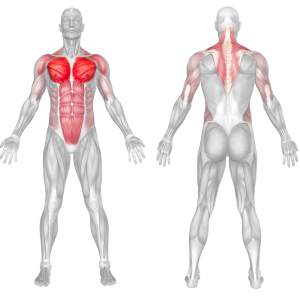
Seated Ballerina Exercise
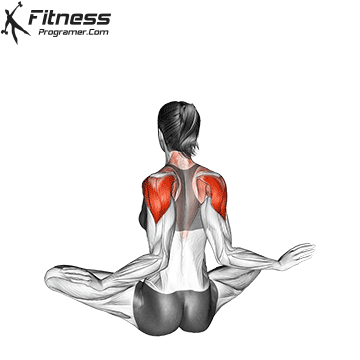
Seated Ballerina Exercise / Benefits
- Shoulder mobility is important for both strengthening and stretching. This exercise can help stabilize and strengthen the scapular muscles while providing range of motion in the shoulders and upper back.
Muscles Worked
